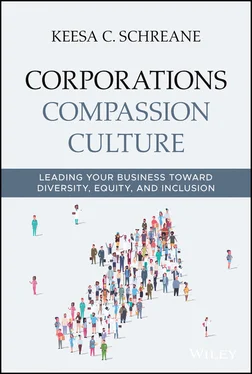Protective labor legislation of the 1930s, such as the Social Security Act, the National Labor Relations Act, and the Fair Labor Standards Act, did not extend to agricultural workers, although 31.8 percent of the African American population in 1940 was employed in agriculture (40.4 percent in the South). 9
In addition, working in agriculture had its own set of challenges. Blacks who were able to save enough money to buy land had to first find a White landowner willing to sell to them. 10 Once they purchased or settled, White merchants sold them tools and goods needed to tend to the land and produce crops. Business fairness and ethics weren't legislated in this environment, so merchants were able to vary the prices and premiums they charged. Some agriculture unions weren't as prevalent or well organized as other unions but, even with the agriculture unions, Black farm workers who stood up against unfair commerce practices by White merchants often paid with their lives.
Moreover, from the New Deal through the early 1960s, federal subsidies allocated for farmers sometimes didn't make it to Black agricultural workers because of “local politics.” The inequities of not receiving the same subsidies as their White counterparts reduced their ability to keep their farming profitable and put them at an economic and professional disadvantage to their peers. 11
In September 30, 1919, Black sharecropper families gathered near Elaine, Arkansas, to discuss membership in the Progressive Farmers and Household Union, a union of African American tenant farmers and sharecroppers, for the purpose of getting a fair price for their cotton and helping them buy land. Late in the evening White men shot into the church where the meeting was taking place. Days later, Whites who opposed Black farmers' efforts invaded Elaine, resulting in the slaughter of many Black men, women, and children. 12
Not being afforded the same rights, pay, and protections as White colleagues was a reality whether you were on the railroad, in the factory, or tilling fields. When people say “systemic racism,” these examples show what they mean. For generations, in all economic sectors, people of color have experienced unethical treatment, unfair pay, and harassment. This costs not only workers but also their employers. Society at large suffers when Black workers are denied full participation in the economy-strengthening gross domestic product (GDP) and participation in capital markets.
Violence and Terror as a Barrier to Entry into the Marketplace
Black business leaders were savvy when wielding power in the capital structure. Throughout the late 19th and early 20th centuries, several Black business leaders and their employees enjoyed equitable work environments and the ability to achieve greater social purpose, too. This didn't work out as well for others. Some business leaders, who sought to have their own enterprise and share the marketplace with White, established business, did so while paying the price in terms of brutality, violence, destruction of their business, and even death.
In 1892, a mixed-race neighborhood in Memphis was the home of two grocery stores. People's Grocery was a Black-owned store that enjoyed significant success. The other grocery was owned by William Barrett, a White store owner. 13 What happened between these two establishments offers a perfect example of what happens when racism exists in a marketplace where violence is an acceptable solution.
Allegedly, a quarrel between White and Black children playing a game near People's Grocery escalated into a quarrel between adults, including workers from the People's Grocery. After the dispute, the White men involved allegedly threated to return to the store later on Saturday. Sensing return was code for confrontation, People's Grocery shopkeepers went to the store Saturday night and armed themselves in preparation for a confrontation. After the men came into the grocery store, People's Grocery shopkeepers shot and wounded them.
After the confrontation and subsequent shooting, the three Black storekeepers, Thomas Moss, Calvin McDowell, and Will Stewart and several Black men were “dragged from their home and jailed.” A mob broke into the jail and zeroed in on Moss, McDowell, and Stewart. Each of the three People's Grocery store owners were then shot and killed. 14
Research by Ida B. Wells highlights the assumption that when White-run businesses felt threatened by Black-run businesses, they resorted to violence to eliminate the competition. 15
Another example is the case of the Tulsa Massacre of 1921, home to Tulsa, Oklahoma's Black Wall Street. Violence ensued, after what was later determined to be a false accusation against a Black youth, and White members of the community destroyed the Black Wall Street section of town. More than 1,200 homes were burned and hundreds more were looted. The community lost stores, churches, a school, a library, the hospital, two newspapers, and much more.
Healthy markets expand and grow. Racism in business in all its vile forms, from violence and brutality to intimidation and passive aggressive behaviors, is unhealthy, uncivil, and unethical. These examples demonstrate how racist attitudes and actions may start in public spaces, but they slither their way into business environments. Racist behavior that is tolerated by social culture, eventually diffuses into business culture. Although some of these behaviors and actions may be illegal and unethical, business leaders can still create and maintain discriminatory and violent cultures while operating completely within the parameters of what is acceptable. This is the origin of the systemic racism, or racism that is ingrained in the culture, that people of color experience in corporate culture today.
There are historical moments of positivity that we can look to for inspiration for compassion and inclusion and the bottom-line benefits that follow. Many center on Black entrepreneurship.
One way people of color have maneuvered out of uncompassionate, biased workplaces to create inclusive and equal corporate experiences is through entrepreneurship. Even during some of the most brutal years in the history of Blacks in business there were success stories. Many people are familiar with the story of Madame C. J. Walker, recorded as the first woman self-made millionaire, but there are other examples of Black titans of industry operating to contribute to the community, while also opening up new markets and generating revenues for their firms.
In 1898, North Carolina Mutual Insurance Company began with a response to a pressing market need. As mentioned, when people of color acted in their capacity as consumers (not just employees) they were historically met with exclusion and many times didn't receive the same level of service Whites received. When Blacks needed to bury their dead or provide for survivors, they counted on private organizations, societies, and churches. 16
Providing life insurance for the Black community was a case of compassion combined with service to an underserved market. Compassion plus capitalizing on high levels of quality service to underserved communities was a clear way to dominate the market that mainstream organizations left wide open. This is a good lesson for today. When corporations see veiled discriminatory practices, refusal to serve, or giving poor, lackluster service to a community or demographic, savvy leaders must analyze it as a potential market opportunity instead of falling in line with what's acceptable by the majority.
This is what North Carolina Mutual did. One of its founders, John Merrick, leveraged what we in the 21st century describe as “soft skills” such as compassion and relationship building to create several successful businesses and workplaces. 17
Читать дальше












